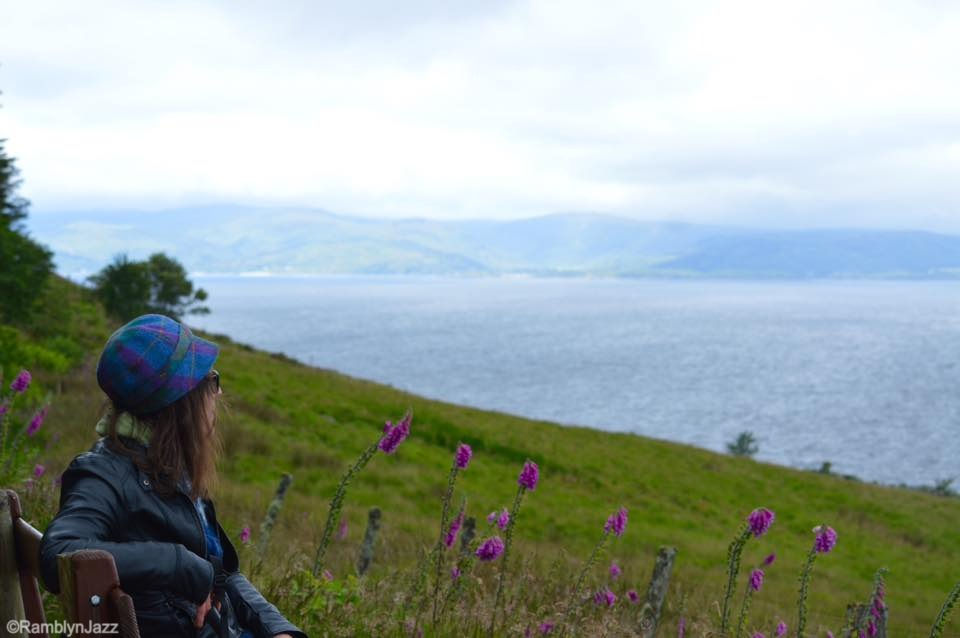UK Road Trip: Isle of Arran, Scotland
- Lyn (aka Jazz)
- Sep 5, 2022
- 3 min read
The Isle of Arran is an island off the west coast of Scotland. It's the largest of the Firth of Clyde islands and is perfect for a day or two while exploring the Scottish islands. Arran has sandy beaches, rugged mountains, standing stones, and great trails. Arran is served by the Cal-Mac ferry system. There are two docks, one at Brodick serving passengers travelling to/from the mainland at Androssen, the other is at Lochranza for service to/from Argyll.

We were in a campervan and had chosen the Seal Shores Campground in Kildonan at the very southern tip of the island. We were very impressed with the amenities, including WiFi, showers, flush toilets, and laundry. Glamping and Gypsy Caravans were also available for rent.

The beaches are beautiful here at Seal Shores. We were delighted to see seals and otters. It would be even lovelier if you are able to catch it on a clear summer day.

After coffee and a bit of breakfast, we decided to drive around the island. We saw the creamery and knew we needed to stop. We spent a fascinating hour watching them make cheese. Unfortunately, the Arran Creamery is now permanently closed.

We set off along the narrow roads for our first experience on Scottish country lanes. These roads only have room for a single vehicle so it can be a wee bit dicey when there's a HUGE truck coming the opposite way. Thank goodness for the Passing Places.

We were heading to the King's Caves for some exploration located about 5km north of Blackwaterfoot. There is free parking in a lot at the trailhead. The path first leads uphill and has a couple of benches to sit and enjoy the stunning views at the top.

The next part of the path leading down to the beach has a few challenging spots with some very rough ground so sensible shoes are a must.

In 1306, after suffering two major defeats in his effort to claim the Scottish throne, Robert the Bruce sought refuge from the British in a cave. As he remained hidden, he watched a spider try and fail multiple times to connect its silken thread to the cave wall to make a web. Eventually, the spider succeeded and provided inspiration for Bruce to continue to fight for the throne. It is not clear that this is the actual cave, as experts have suggested 4 other caves as possibilities.

There are several caves in the sandstone cliffs. The cave said to be Bruce's is protected by a metal gate and fuzzy spider.

On one wall of the main section of the cave is a figure of a deer and traditional cup and ring marks. On the opposite wall is an Ogham inscription. Near the back of the cave, horse figures are carved into the stone. Other carvings include serpents, triangle shapes and a stone seat. The carvings of two crosses and a man near the opening are the easiest to see.

Many visitors, especially fans of the book and TV series Outlander, will want to visit the Standing Stones of Machrie Moor. These stones have an mystical and interesting history which I explored previously in this post.

Our explorations on Arran were coming to an end as we made our way to Lochranza to catch the ferry to Argyll. Since we had a little time, we were able to walk around Lochranza castle, located right near the ferry dock.

The castle dates from the 13th century and it is thought that Robert the Bruce landed here after returning from Ireland. Ownership changed many times over the years and was used by Oliver Cromwell in the mid-1600s. By the 1800s, it was abandoned. It is now owned by Historic Scotland. There is no admission fee.

We found plenty to keep us occupied for a couple of days but it was time to carry on our UK Road Trip. We made our way back to the campervan at the ferry dock and were on our way to our next Scottish island, Argyll.

Thanks for meandering with me! If you like what you are reading, drop me a note in the comments. Share the link with a friend or on your social media (please). Become a member to get notified of new content, access to our members' forum, and a monthly newsletter.

Comments